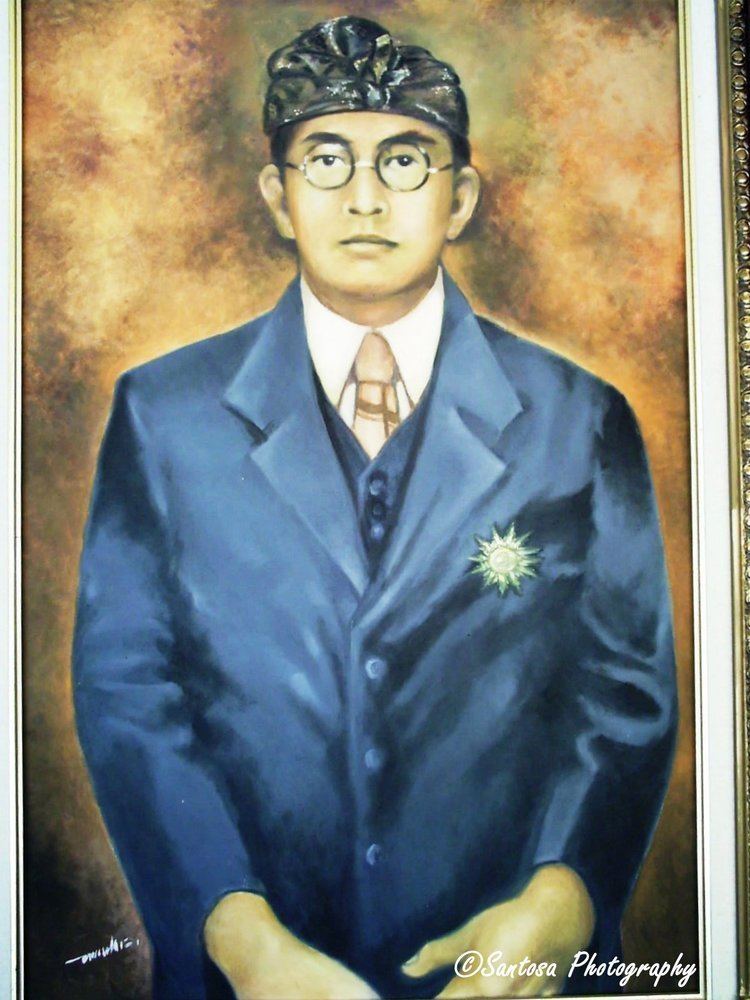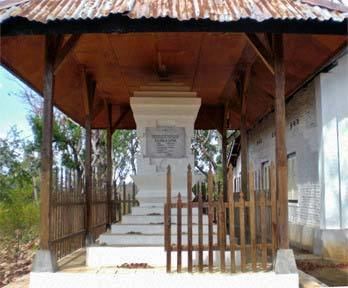Name Pandji Tisna | Role Writer | |
 | ||
Died June 2, 1978, Lovina Beach, Indonesia | ||
Net bali bali history le mayeur dan aa pandji tisna
Anak Agung Pandji Tisna (11 February 1908 – 2 June 1978), also known as Anak Agung Nyoman Pandji Tisna, I Gusti Nyoman Pandji Tisna, or just Pandji Tisna, was the 11th descendent of the Padji Sakti dynasty of Buleleng, Singaraja, which is in the northern part of Bali, Indonesia. He succeeded his father, Anak Agung Putu Djelantik, in 1944.
Contents
- Net bali bali history le mayeur dan aa pandji tisna
- Film Dokumenter Anak Agung Pandji Tisna
- Early years
- Career
- Development of the Balinese tourist industry
- Family
- Major works
- References

On the last page of Pandji Tisna's book, I Made Widiadi, written in 1955, he wrote his life story in chronological order. He was a writer and a novelist. He refused to be the king of Buleleng, but being the eldest son, the Japanese occupancy troops forced him to be "syucho" after the death of his father in 1944.

During his reign, he became the leader of the Council of Kings of all of Bali from 1946 to 1947 (Paruman Agung) and the Regent of Buleleng. In 1947, because his uniquely Christian faith did not fit in with the predominant Hindu religion, Pandji Tisna surrendered the throne to his younger brother, Anak Agung Ngurah Ketut Djelantik or I Gusti Ketut Djelantik, also known as Meester Djelantik, until 1949.

He died 2 June 1978 and was buried in the graveyard on the Eastside of his land near the chapel he built years before.

Film Dokumenter Anak Agung Pandji Tisna
Early years
Anak Agung Pandji Tisna was born to Anak Agung Putu Djelantik and his wife Jero Mekele Rengga.
Pandji Tisna received his formal education in a primary school in Singaraja and continued his education in a middle school in Batavia.
Career
Pandji Tisna is best known as a novelist. His novels, which all took place in Bali, especially in Singaraja, his birthplace, were published by Balai Pustaka. Many of his short stories were published in Terang Bulan magazine in Surabaya. He also took the time to write poems, such as Ni Poetri, which was published by Sutan Takdir Alisyahbana in Poedjangga Baroe magazine in Jakarta.
Pandji Tisna had a varied career as a merchant, secretary to his father, Headmaster of Elementary School, Editor of Jatayu magazine, and farmer, before succeeding to the throne on the death of his father on 25 July 1944. He was Chair of the Balinese Council of Kings from 1946–1947, but abdicated in favour of his brother, Meester Djelantik, in 1947.
He was a member of the Provisional Parliament of the State of East Indonesia from 1946-1948.
Development of the Balinese tourist industry
Pandji Tisna is also remembered as a pioneer of Balinese tourism, especially in the northern beach district. In 1953, he chose Desa Tukad Cebol (now Desa Kaliasem [Kaliasem Village]) as his holiday home. There he wrote and received both local and foreign guests. He named his holiday home Lovina, which is an abbreviation of words Love Indonesia. He then built several guest houses in the western coast in Buleleng. The whole area then became known as Pantai Lovina, or Lovina Beach in English. For this reason, he is accredited as "The Father of Balinese Tourism". In 2003, the Balinese government posthumously awarded him the Karya Karana Award in recognition of his services to the development of Balinese tourism.
Family
Pandji Tisna had four wives, Anak Agung Istri Manik, with whom he had two sons; Ni Ketut Mayas (Jero Mekele Seroja), with whom he had two sons and 1 daughter; Luh Sayang (Mekele Sadpada), with whom he had two sons ; and Jro Mekele Resmi, with whom he had 4 sons and two daughters.
